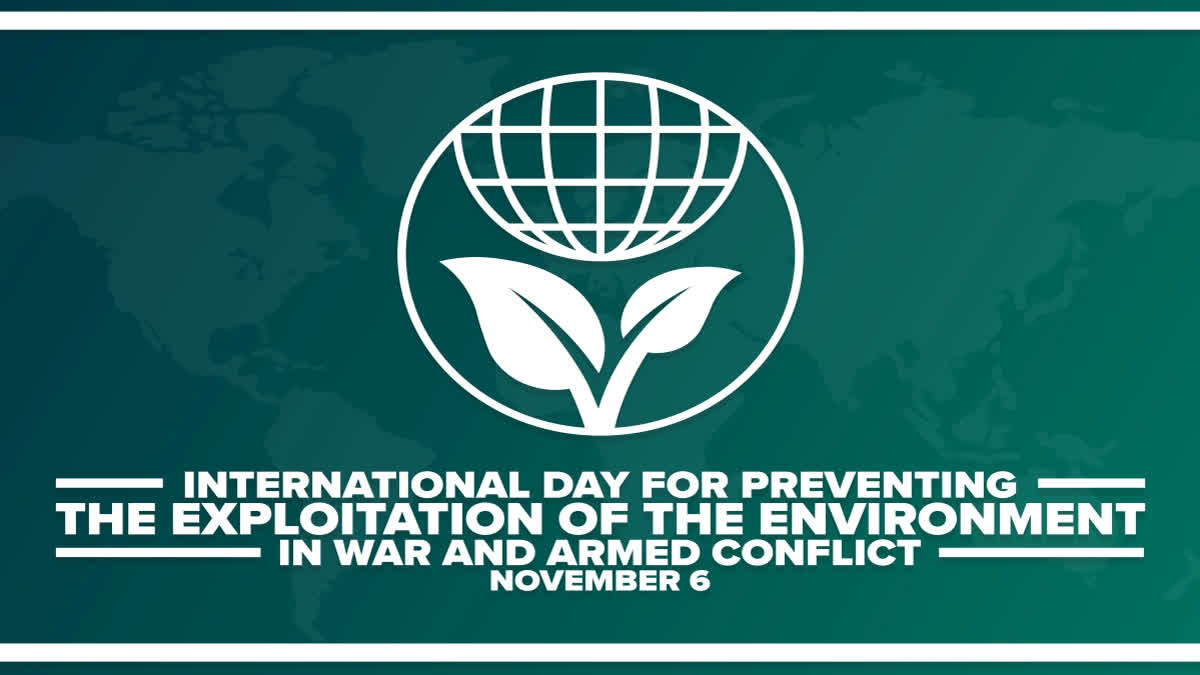The United Nations observes the International Day for the Prevention of Exploitation of the Environment in War and Armed Conflict each year on November 6 to raise awareness and encourage global efforts to protect the environment in times of conflict. This day sheds light on the often-overlooked environmental impacts of armed conflict and underscores the importance of environmental protection as part of peacebuilding efforts.
Origins and Significance of the Day
Declaration and Resolution
In 2001, the United Nations General Assembly established November 6 as the International Day for Preventing the Exploitation of the Environment in War and Armed Conflict. This declaration emerged from decades of growing concern over how military activities and wars were devastating ecosystems worldwide. Later, in May 2016, the United Nations Environment Assembly adopted Resolution UNEP/EA.2/Res.15, which acknowledged the vital role that sustainable ecosystems play in reducing conflict risks and emphasized the need for action to protect them.
Historical Context
The need to address environmental damage from warfare became glaringly apparent during and after the Vietnam War, where the use of herbicides like Agent Orange decimated jungles and ecosystems, leaving a legacy of damage. The Gulf War of the 1990s offered another example when retreating forces set oil wells ablaze, polluting air and land. Such instances compelled the international community to consider legal frameworks and preventive measures to protect the environment from the scourge of war.
The Hidden Impact of War on the Environment
The Environment as a Silent Victim
War takes an insidious toll on nature. Forests, rivers, and entire ecosystems are routinely caught in the crossfire of human conflict. When calculating the cost of war, however, environmental devastation often fails to make the list. The environment bears a lasting, silent burden, with little voice to protest its exploitation and degradation.
The International Day for Preventing the Exploitation of the Environment in War and Armed Conflict serves as a reminder of these invisible casualties and encourages a commitment to shield our planet from the impact of military aggression.
Cases of Environmental Impact in Conflict Zones
In Iraq during 2017, the Islamic State burned oil wells, unleashing vast toxic clouds that poisoned the air, soil, and water around Mosul. In Afghanistan, rampant deforestation from decades of war has reduced forest cover by an astounding 95% in certain areas. In war-torn regions such as Gaza and Yemen, damage to water infrastructure has escalated environmental degradation and risked public health.
Meanwhile, the war in Ukraine has triggered thousands of cases of environmental pollution, impacting the Siverskyi Donets River and damaging ecosystems critical for biodiversity. The destruction extends beyond Ukraine’s borders, underscoring the broader environmental hazards that conflict poses.
Goals of the International Day for Preventing Environmental Exploitation in War
The observance of this day highlights several key objectives to guide international policy and awareness:
- Environmental Safety During Conflict: Emphasizing that protecting nature during war is as crucial as saving human lives.
- Promoting Peace and Sustainability: Encouraging peacebuilding efforts that prioritize environmental integrity as a foundation for sustainable recovery.
- International Collaboration: Fostering dialogue among nations to implement strategies that minimize environmental destruction during armed conflicts.
- Safeguarding Human Well-being: Recognizing the detrimental health impacts that environmental degradation in conflict zones has on civilian populations.
- Advocating Legal Protections: Supporting the enforcement of international laws like the Geneva Conventions that prohibit warfare tactics causing severe environmental damage.
- Raising Public Awareness: Informing citizens about the environmental consequences of armed conflicts to mobilize public support for protective measures.
Legal Protections and Challenges
While the Geneva Conventions include provisions to prevent warfare from causing “widespread, long-term, and severe damage” to the environment, achieving this standard remains challenging. The burden of proof to demonstrate environmental destruction under these conventions is high, which limits accountability. Experts argue that the environment itself must be recognized as worthy of protection, separate from its relationship to human well-being.
Recommended Actions to Mitigate Environmental Harm in War
The United Nations urges nations and international bodies to take proactive measures to mitigate environmental damage in armed conflict zones. The following recommendations serve as a blueprint for protection:
- Prevent Conflicts from Escalating: Address the root causes of conflict to mitigate the risk of environmental damage before it occurs.
- Restore Peace and Environment: Post-conflict recovery should integrate ecosystem restoration efforts to ensure sustainable peace.
- Promote Gender Equality and Resource Management: Recognize the complex relationship between natural resources and gender roles in conflict settings, ensuring women’s inclusion in resource management.
Summary of the News
| Summary/Static | Details |
| Why in the news? | The United Nations observes the International Day for the Prevention of Exploitation of the Environment in War and Armed Conflict each year on November 6 to raise awareness and encourage global efforts to protect the environment in times of conflict. |
|
Goals of the International Day for Preventing Environmental Exploitation in War |
|
| History of the Day |
|




 National Energy Conservation Day 2025: M...
National Energy Conservation Day 2025: M...
 International Day Against Colonialism in...
International Day Against Colonialism in...
 International Day of Neutrality (12 Dece...
International Day of Neutrality (12 Dece...







